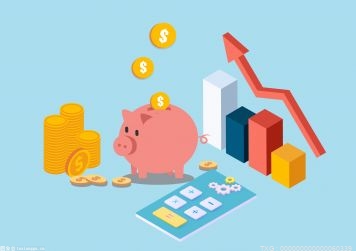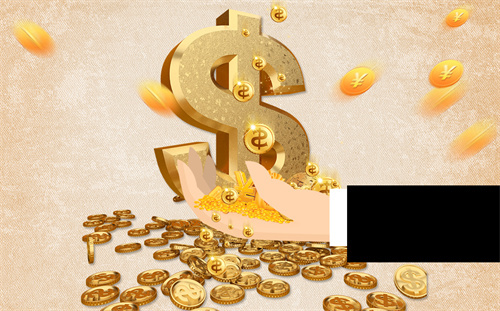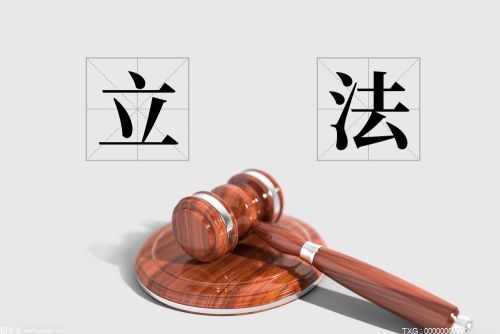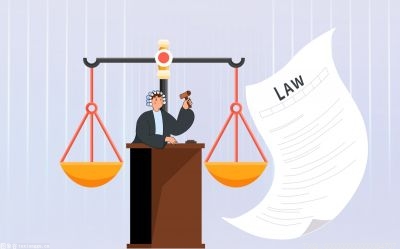全球焦点!石油巨头正在为下一次油价暴跌做好准备
石油巨头一直在创造创纪录的高利润,但这并没有改变它们的资本纪律,因为它们正在为下一次油价暴跌做好准备
标准普尔500指数的能源板块自今年年初以来已经下跌5%,反映出人们对经济衰退将拉低油价的担忧
运营成本上升、利率上升以及石油和天然气价格下跌等因素表明,石油巨头的好时光或将很快就要结束
 【资料图】
【资料图】
中国石化新闻网讯 据油价网2023年5月9日报道,石油巨头从去年的能源危机中赚取的巨额现金已成为传奇故事。
无论是用暴利税来威胁石油行业,还是被活动人士用来给已经被妖魔化的石油行业形象增添更多细节,这样的武器都不再特别奏效。
与此同时,石油行业一直保持低调,降低了资本支出。由于油气公司寻求为下一次价格暴跌做好准备,资本自律的趋势似乎已在油气行业中根深蒂固。
《华尔街日报》本周报道称,标准普尔500指数中最大的7家油气公司的现金总额已超过800亿美元。仅埃克森美孚公司一家公司的现金储备就接近300亿美元。雪佛龙公司的现金储备超过156亿美元。石油巨头中规模最小的依欧格资源公司也拥有超过50亿美元的现金储备。
“石油巨头一直在分红。这是一个标志,”能源投资公司Tortoise的董事总经理Rob Thummel如是告诉《华尔街日报》记者,“但现在除了股息,还有多余的现金可以用来回购股票。”
这就是过去几年,尤其是去年,能源股保持高位的原因。投资者可能越来越关注气候变化,但当他们看到回报时,他们仍然可以意识到这才是“真实回报”。他们在能源股中看到了这一点。
另一方面,这些能源股的发行商知道,正如雪佛龙公司首席财务官皮埃尔·布雷伯所说,“石油巨头的好时光不会长久,它们正在储备现金,以备当前的好时光结束。好时光结束的时间可能比预期的要早。 ”
英国《金融时报》在最近的一份报告中指出,自今年年初以来,标准普尔500指数的能源板块下跌了5%,而整体指数上涨了8%。油价在一个月内每桶下跌了约10美元。对经济衰退的恐惧情绪高涨,这对能源股造成了伤害,而这些股票即使在经济不景气的时候也能带来一定的回报。
在某种程度上,这种情况有点荒谬,正如美国能源咨询和分析公司PetroNerds首席执行官特里莎·柯蒂斯所描述的那样,“这些石油巨头在亏损的时候股价很高”。柯蒂斯对英国《金融时报》表示,“现在石油巨头赚了大钱,却得不到回报。”
据一些人说,人们担心随着油价下跌,能源公司将开始削减股息,其中一些公司的股息是可变的。似乎并非所有投资者都对此感到高兴。但是,在大型石油公司和小型石油公司也现金充裕之际,对能源股的怀疑还有一个更大的因素。
达拉斯联邦储备银行第一季度能源调查的一位受访者在评论部分表示:“据估计,油田作业成本增加了30%~40%,借款利息费用也增加了,天然气价格急剧下跌,加上原油价格下跌,导致现金流明显减少。”
同一位受访者表示:“外部投资者似乎对碳氢化合物失去了兴趣并指出全球经济和地缘政治前景的不确定性。我们预计,在一个周期性的行业中,会有另一个‘混过去’的时期,更多的参与者将被淘汰。”
英国《金融时报》援引的美国能源信息署(EIA)公布的数据显示,除了成本上涨和油井生产率下降外,声誉因素似乎比以往任何时候都更重要。达拉斯联邦储备银行调查的受访者表示,外部投资者正在对石油和天然气失去兴趣。PetroNerds的柯蒂斯表示:“市场和投资者仍然对石油和天然气感到不安。这些公司的价值并没有按照它们的资产或它们的产品来计算。”
在这样的背景下,至少在美国经济和全球经济前景变得更加明朗之前,没有什么比让股息保持接近、现金储备保持更接近更有意义的了。
李峻 编译自 油价网
原文如下:
Oil Majors Are Preparing For A Difficult Period
· The oil majors have been making record-high profits, but that hasn’t altered their capital discipline as they prepare for the next oil price rout.
· The energy segment of the S&P 500 has shed 5% since the start of the year, reflecting a fear that a recession will drive oil prices lower.
· The combination of higher operating costs, increased interest rates, and a drop in both oil and gas prices suggests the good times may soon be at an end.
The piles of cash Big Oil made from last year"s energy crunch have become the stuff of legend. They have also become a weapon in the hands of governments that like to have a scapegoat handy.
The weapon hasn"t been particularly effective, whether used to threaten the oil industry with windfall profit taxes or deployed by activists to add more detail to the already demonized image of the industry.
The industry, meanwhile, has kept its head down and its capital spending lower. The capital discipline trend appears to have become entrenched in oil and gas as companies seek to be prepared for the next price rout.
The Wall Street Journal reported this week that the seven largest oil and gas companies on the S&P 500 have accumulated a combined cash amount topping $80 billion. Exxon alone has a cash stash of close to $30 billion. Chevron has over $15.6 billion. EOG, the smallest among the big, has over $5 billion. And they are keeping it.
"They"ve paid dividends forever. That"s been a hallmark," Rob Thummel, managing director at energy investment firm Tortoise, told the WSJ. "But now there"s excess cash beyond dividends to do buybacks."
That"s what"s helped keep energy stocks high in the past couple of years and especially last year. Investors may be getting more climate-conscious, but they can still recognize a return when they see it. And they see it in energy stocks.
The issuers of those energy stocks, on the other hand, know that, as Chevron"s CFO Pierre Breber put it, "good times don"t last" and are conserving cash for when the current crop of good times ends. Which might be sooner than expected.
The energy segment of the S&P 500 has shed 5% since the start of the year while the broader index has added 8%, the Financial Times noted in a recent report. Oil prices have dropped by some $10 per barrel over a month. Fear of recession is running high and hurting energy stocks—those same stocks that carry with them the promise of certain returns, even in bad times.
In a way, the situation is kind of absurd, as described by PetroNerds" chief executive Trisha Curtis: "These companies had high share prices when they were losing money," Curtis told the FT. "Now they are making money hand over fist and not being rewarded."
According to some, there is concern that with lower oil prices, energy companies will start cutting their dividend—those of them that have made said dividend variable. It seems not all investors are happy about it. But there is a bigger factor for the energy stock skepticism that is emerging at a time when Big Oil and smaller operators too are flush with cash.
"An estimated 30–40 percent cost increase in field operations, increased interest charges on borrowed money, a drastic collapse in natural gas prices combined with lower crude oil prices produced a noticeable lower cash flow," one respondent to the Q1 Dallas Fed Energy Survey said in the comments section.
"Outside investors seem to be losing interest in hydrocarbons," the same respondent said, also noting the uncertain outlook on the global economy and geopolitics. "We expect another "muddle through" period in a cyclical business where more players will be winnowed out."
Besides cost inflation and lower well productivity, according to EIA data cited by the FT, the reputational factor appears to be stronger than ever. According to that Dallas Fed Survey respondent, outside investors are losing interest in oil and gas. According to PetroNerds"s Curtis, "The market and investors are still uncomfortable with oil and gas. The companies are not being valued to their assets or what they"re producing."
In a context like this, there is little that makes as much sense as keeping your dividends close and your cash pile closer, at least until some more clarity emerges about the future of the U.S. economy and the wider world.
(责任编辑:黄振 审核:蒋文娟 )标签:
-
 全球焦点!石油巨头正在为下一次油价暴跌做好准备 石油巨头一直在创造创纪录的高利润,但这并没有改变它们的资本纪律,因为它们正在为下一次油价暴跌做好
全球焦点!石油巨头正在为下一次油价暴跌做好准备 石油巨头一直在创造创纪录的高利润,但这并没有改变它们的资本纪律,因为它们正在为下一次油价暴跌做好 -
 微软推送新版Win11了吗?支持USB4管理界面吗? 微软新版Win11支持自适应亮度控制,下半年新设备井喷今年的iPhone 15系列全线放弃Lightning接口,转向U
微软推送新版Win11了吗?支持USB4管理界面吗? 微软新版Win11支持自适应亮度控制,下半年新设备井喷今年的iPhone 15系列全线放弃Lightning接口,转向U -
 ChatGPT 标注指南来了!数据是关键 Datawhale干货作者:太子长琴,算法工程师,Datawhale成员前言ChatGPT刚刚出来时,业内人士一致认为高质量
ChatGPT 标注指南来了!数据是关键 Datawhale干货作者:太子长琴,算法工程师,Datawhale成员前言ChatGPT刚刚出来时,业内人士一致认为高质量 -
 旅游热、酒店忙、餐饮旺,服务业求才若渴 环球速递 旅游热、酒店忙、餐饮旺,消费服务行业用工需求持续增长,“求才若渴”。由于消费服务业用人需求存在不确定
旅游热、酒店忙、餐饮旺,服务业求才若渴 环球速递 旅游热、酒店忙、餐饮旺,消费服务行业用工需求持续增长,“求才若渴”。由于消费服务业用人需求存在不确定 -
 每日看点!会计和出纳的分工及工作流程_会计和出纳的分工 1、我就在机关工作啦,这个的话,简单点讲。2、出纳就是要在外面跑,会计就是要在家里算……出纳涉及到和银
每日看点!会计和出纳的分工及工作流程_会计和出纳的分工 1、我就在机关工作啦,这个的话,简单点讲。2、出纳就是要在外面跑,会计就是要在家里算……出纳涉及到和银 -
 win10迈克菲怎么样(win10迈克菲怎么关闭) 全球资讯 1、打开迈克菲软件,在主页面选择【导航】-【防火墙】-【关闭】,然后在您想何时恢复防火墙中,选择【从不
win10迈克菲怎么样(win10迈克菲怎么关闭) 全球资讯 1、打开迈克菲软件,在主页面选择【导航】-【防火墙】-【关闭】,然后在您想何时恢复防火墙中,选择【从不
-
导游词开场白有哪些?小学研学团导游开场白都在这儿 导游词开场白篇1大家好我是你们的导游,岳导游。欢迎光临世界文化遗产——颐和园。很荣幸为大家服务。现
-
 证明夫妻感情破裂的证据如何收集?感情不合离婚彩礼在什么法定的情况下需要退? 一、感情不合离婚彩礼用退吗感情不合离婚彩礼在法定的情况下需要退:1 双方办理结婚登记手续但确未共同生活;2 婚前给付并导致给付人生活困
证明夫妻感情破裂的证据如何收集?感情不合离婚彩礼在什么法定的情况下需要退? 一、感情不合离婚彩礼用退吗感情不合离婚彩礼在法定的情况下需要退:1 双方办理结婚登记手续但确未共同生活;2 婚前给付并导致给付人生活困 -
 法院离婚调解书可以反悔吗条件有哪些 起诉离婚不开庭调解有用吗? 法院离婚调解书可以反悔吗法院离婚调解书一般不可以反悔。因为,离婚调解书的效力与法院判决书的效力是
法院离婚调解书可以反悔吗条件有哪些 起诉离婚不开庭调解有用吗? 法院离婚调解书可以反悔吗法院离婚调解书一般不可以反悔。因为,离婚调解书的效力与法院判决书的效力是 -
 结婚登记审查都有什么内容?婚姻登记处须有管辖权吗? 一、丢失结婚证补办需要什么手续丢失结婚证补办需要的手续如下:1 双方持有本人的常住户口簿和居民身份证,到男女其中一方婚姻登记处办理2
结婚登记审查都有什么内容?婚姻登记处须有管辖权吗? 一、丢失结婚证补办需要什么手续丢失结婚证补办需要的手续如下:1 双方持有本人的常住户口簿和居民身份证,到男女其中一方婚姻登记处办理2 -
 基金卖出份额和金额一样吗?基金份额卖出怎么算金额? 不一样,卖出份额是指所卖出的基金份额数量,卖出金额则是指卖出基金的总价值,只有基金的净值等于1元时
基金卖出份额和金额一样吗?基金份额卖出怎么算金额? 不一样,卖出份额是指所卖出的基金份额数量,卖出金额则是指卖出基金的总价值,只有基金的净值等于1元时 -
 离婚时哪些财产属于夫妻共同财产呢?夫妻共同财产继承范围有哪些? 近期,民政局发布了2019年国家登记结婚和离婚的数据,2019年近900万人登记结婚,而离婚的人数竟然也有67
离婚时哪些财产属于夫妻共同财产呢?夫妻共同财产继承范围有哪些? 近期,民政局发布了2019年国家登记结婚和离婚的数据,2019年近900万人登记结婚,而离婚的人数竟然也有67 -
 微软推送新版Win11了吗?支持USB4管理界面吗? 微软新版Win11支持自适应亮度控制,下半年新设备井喷今年的iPhone 15系列全线放弃Lightning接口,转向U
微软推送新版Win11了吗?支持USB4管理界面吗? 微软新版Win11支持自适应亮度控制,下半年新设备井喷今年的iPhone 15系列全线放弃Lightning接口,转向U -
 个人成立基金公司需要什么条件呢?买基金在哪里买比较划算? 1、基金公司有公司规章以及营业场所,还要有健全的内部管理制度;2、基金公司的注册资本不少于一亿人民币
个人成立基金公司需要什么条件呢?买基金在哪里买比较划算? 1、基金公司有公司规章以及营业场所,还要有健全的内部管理制度;2、基金公司的注册资本不少于一亿人民币 -
 妻双方感情破裂离婚 孩子和房子怎么分?收集离婚的证据的方式都有哪些? 一、婚姻破裂判定标准婚姻破裂判定标准大致如下:1 重婚或有配偶者与他人同居的。2 实施家庭暴力或虐待、遗弃家庭成员的。实施家庭暴力是指
妻双方感情破裂离婚 孩子和房子怎么分?收集离婚的证据的方式都有哪些? 一、婚姻破裂判定标准婚姻破裂判定标准大致如下:1 重婚或有配偶者与他人同居的。2 实施家庭暴力或虐待、遗弃家庭成员的。实施家庭暴力是指 -
 如何选择靠谱的理财平台呢?如何判断理财哪个平台相比较靠谱? 如何选择靠谱的理财平台呢?一、了解理财公司的风险管控措施坏账率是衡量一个网贷平台对于风险控制的重要
如何选择靠谱的理财平台呢?如何判断理财哪个平台相比较靠谱? 如何选择靠谱的理财平台呢?一、了解理财公司的风险管控措施坏账率是衡量一个网贷平台对于风险控制的重要 -
 怀孕后孕酮偏低怎么办?孕酮低了有什么危害? 怀孕后孕酮偏低怎么办?1怀孕初期应当依照医嘱进行体检,孕酮低的孕妇,应当按时上医院打黄体胴。2安宫黄
怀孕后孕酮偏低怎么办?孕酮低了有什么危害? 怀孕后孕酮偏低怎么办?1怀孕初期应当依照医嘱进行体检,孕酮低的孕妇,应当按时上医院打黄体胴。2安宫黄 -
 办理结婚登记需要什么证件?没有登记结婚不受法律保护吗? 一、没有登记结婚受法律保护吗没有登记结婚不受法律保护。现在法律上已经不承认事实婚姻。婚姻一定要去领结婚证,不要去相信合同,这是非法
办理结婚登记需要什么证件?没有登记结婚不受法律保护吗? 一、没有登记结婚受法律保护吗没有登记结婚不受法律保护。现在法律上已经不承认事实婚姻。婚姻一定要去领结婚证,不要去相信合同,这是非法 -
 djvu是什么格式文件?djvu格式的文件怎么打开? djvu是什么格式文件?djvu也是一种图像文档格式,也就是我们所说的电子书格式,和PDF格式类似,需要通过d
djvu是什么格式文件?djvu格式的文件怎么打开? djvu是什么格式文件?djvu也是一种图像文档格式,也就是我们所说的电子书格式,和PDF格式类似,需要通过d -
 离婚手续怎么办理流程是什么?没离婚财产转移给孩子有效吗? 离婚手续怎么办理流程是什么?协议离婚:1、离婚的男女双方共同到一方常住户口的区、县级市民政局(或镇人
离婚手续怎么办理流程是什么?没离婚财产转移给孩子有效吗? 离婚手续怎么办理流程是什么?协议离婚:1、离婚的男女双方共同到一方常住户口的区、县级市民政局(或镇人 -
 股市休息时间是什么时候?股市年底什么时候停盘? 股市休息时间是什么时候?一般来说,中国股市的交易时间是周一至周五,沪深两市的开市和收盘时间是一样的
股市休息时间是什么时候?股市年底什么时候停盘? 股市休息时间是什么时候?一般来说,中国股市的交易时间是周一至周五,沪深两市的开市和收盘时间是一样的 -
 欠银行钱不还会坐牢吗?信用卡逾期两个月会被起诉吗? 欠银行钱不还会坐牢吗?1、欠银行钱不还会不会坐牢要看具体的情况,就算欠银行钱被起诉了,那么法院判决
欠银行钱不还会坐牢吗?信用卡逾期两个月会被起诉吗? 欠银行钱不还会坐牢吗?1、欠银行钱不还会不会坐牢要看具体的情况,就算欠银行钱被起诉了,那么法院判决 -
 qdii基金是什么意思?qdii基金3点前买入净值咋算? qdii基金是什么意思?qdii基金指在一个国家设立并经国家有关部门批准,在海外证券市场从事股票和债券证券
qdii基金是什么意思?qdii基金3点前买入净值咋算? qdii基金是什么意思?qdii基金指在一个国家设立并经国家有关部门批准,在海外证券市场从事股票和债券证券 -
 准生证的期限是多长时间?没有登记结婚是不可以办准生证的吗? 一、没有登记结婚可以办准生证吗没有登记结婚是不可以办准生证的。但是现在全国都取消了准生证,实行生育登记服务制度,生育两个以内的孩子
准生证的期限是多长时间?没有登记结婚是不可以办准生证的吗? 一、没有登记结婚可以办准生证吗没有登记结婚是不可以办准生证的。但是现在全国都取消了准生证,实行生育登记服务制度,生育两个以内的孩子 -
 新三板指数如何理解?新三板指数基金是什么? 新三板指数如何理解?新三板指数是反映新三板市场整体行情的指标。它由中国证券投资基金业协会(CIFA)
新三板指数如何理解?新三板指数基金是什么? 新三板指数如何理解?新三板指数是反映新三板市场整体行情的指标。它由中国证券投资基金业协会(CIFA) -
 离婚登记办理流程是怎样的?没离婚财产转移给孩子有效吗? 离婚登记办理流程是怎样的?协议离婚:1、离婚的男女双方共同到一方常住户口的区、县级市民政局(或镇人民
离婚登记办理流程是怎样的?没离婚财产转移给孩子有效吗? 离婚登记办理流程是怎样的?协议离婚:1、离婚的男女双方共同到一方常住户口的区、县级市民政局(或镇人民 -
 乳液和面霜的区别是什么?补水乳液的主要功效是什么? 乳液和面霜的区别首先就使用方法而言,乳液的使用会有更加简洁一些,直接在洗完脸之后,轻轻的拍打在脸
乳液和面霜的区别是什么?补水乳液的主要功效是什么? 乳液和面霜的区别首先就使用方法而言,乳液的使用会有更加简洁一些,直接在洗完脸之后,轻轻的拍打在脸 -
 qe4是什么意思?中立仓是什么意思? 美联储宣布推出第四轮量化宽松QE4,每月采购450亿美元国债,替代扭曲操作,加上QE3每月400亿美元的的宽
qe4是什么意思?中立仓是什么意思? 美联储宣布推出第四轮量化宽松QE4,每月采购450亿美元国债,替代扭曲操作,加上QE3每月400亿美元的的宽 -
 离婚证所需要的照片都需要什么要求?离婚证照片的尺寸是多大? 离婚证照片的尺寸要求,必须是2寸大小的即可。离婚证所需要的照片必须是具有相同的底色的正面彩色免冠二
离婚证所需要的照片都需要什么要求?离婚证照片的尺寸是多大? 离婚证照片的尺寸要求,必须是2寸大小的即可。离婚证所需要的照片必须是具有相同的底色的正面彩色免冠二 -
 什么是呼吸睡眠暂停综合症?呼吸强迫症是什么? 什么是呼吸睡眠暂停综合症呼吸睡眠暂停综合症是因鼻炎、巨舌症、扁桃体肥大引起的疾病。患者主要表现出
什么是呼吸睡眠暂停综合症?呼吸强迫症是什么? 什么是呼吸睡眠暂停综合症呼吸睡眠暂停综合症是因鼻炎、巨舌症、扁桃体肥大引起的疾病。患者主要表现出 -
 诺基亚格式化命令是什么?诺基亚格式化卡失败怎么回事? 诺基亚格式化命令是什么?1、软格:在手机上输入* 7370 之后要求你输入锁码,初始密码是:12345,如果你
诺基亚格式化命令是什么?诺基亚格式化卡失败怎么回事? 诺基亚格式化命令是什么?1、软格:在手机上输入* 7370 之后要求你输入锁码,初始密码是:12345,如果你 -
 股市休息时间是什么时候?股票一般什么时候闭市? 股市休息时间是什么时候?一般来说,中国股市的交易时间是周一至周五,沪深两市的开市和收盘时间是一样的
股市休息时间是什么时候?股票一般什么时候闭市? 股市休息时间是什么时候?一般来说,中国股市的交易时间是周一至周五,沪深两市的开市和收盘时间是一样的 -
 期货爆仓是什么意思?强制平仓是不是全亏了 期货爆仓是什么意思?期货爆仓,简单来说就是指期货账户因保证金不足而导致的归零,是投资者平仓了结持仓
期货爆仓是什么意思?强制平仓是不是全亏了 期货爆仓是什么意思?期货爆仓,简单来说就是指期货账户因保证金不足而导致的归零,是投资者平仓了结持仓 -
 违反夫妻忠实义务的情形是什么?夫妻间忠诚协议满足什么条件就是有效的? 一、违反夫妻忠实义务的法律责任违反夫妻忠实义务需要承担相应的不利的法律后果。《民法典》在规定了夫妻之间忠实的义务的同时,还设立了对
违反夫妻忠实义务的情形是什么?夫妻间忠诚协议满足什么条件就是有效的? 一、违反夫妻忠实义务的法律责任违反夫妻忠实义务需要承担相应的不利的法律后果。《民法典》在规定了夫妻之间忠实的义务的同时,还设立了对 -
 调解离婚后可以反悔吗为什么 法院调解离婚成功多久可以拿到调解书? 调解离婚后可以反悔吗调解离婚后可以反悔,不过应当在调解书生效前作出意思表示。根据我国《民事诉讼法
调解离婚后可以反悔吗为什么 法院调解离婚成功多久可以拿到调解书? 调解离婚后可以反悔吗调解离婚后可以反悔,不过应当在调解书生效前作出意思表示。根据我国《民事诉讼法 -
 奉子成婚是什么意思(奉子成婚的意思) 奉子成婚是什么意思?奉子成婚一说出自中国古代命理学著作《滴天髓》,意思是女方未婚先孕,为了掩人耳目
奉子成婚是什么意思(奉子成婚的意思) 奉子成婚是什么意思?奉子成婚一说出自中国古代命理学著作《滴天髓》,意思是女方未婚先孕,为了掩人耳目 -
 车损险到底有没有必要买 私家车车险怎么买最划算? 车损险到底有没有必要买?购买车损险的关键,在于自修车辆的成本。若车主的车辆已经使用多年,5年或10年
车损险到底有没有必要买 私家车车险怎么买最划算? 车损险到底有没有必要买?购买车损险的关键,在于自修车辆的成本。若车主的车辆已经使用多年,5年或10年 -
 申请停息挂账影响信用吗?信用卡逾期会有什么后果? 申请停息挂账影响信用吗?信用卡停息挂账这一行为本身不会对客户的个人信用产生什么不良影响,因为停息挂
申请停息挂账影响信用吗?信用卡逾期会有什么后果? 申请停息挂账影响信用吗?信用卡停息挂账这一行为本身不会对客户的个人信用产生什么不良影响,因为停息挂 -
 未到法定结婚年龄的婚姻有效吗?未到法定结婚年龄满足什么条件可以要回彩礼? 一、少数民族法定结婚年龄是多大少数民族法定结婚年龄是必须男年满二十二周岁,女必须年满二十周岁可以结婚,男女只要达到了结婚年龄就可以
未到法定结婚年龄的婚姻有效吗?未到法定结婚年龄满足什么条件可以要回彩礼? 一、少数民族法定结婚年龄是多大少数民族法定结婚年龄是必须男年满二十二周岁,女必须年满二十周岁可以结婚,男女只要达到了结婚年龄就可以 -
 申购新股如何中签?新股申购后多久上市交易? 申购新股如何中签想要中签就需要提高中签的概率,可以采取以下操作:【1】顶格申购在申购新股时都规定了
申购新股如何中签?新股申购后多久上市交易? 申购新股如何中签想要中签就需要提高中签的概率,可以采取以下操作:【1】顶格申购在申购新股时都规定了 -
 天气丹滋养液适合什么人群使用呢?天气丹滋养液的成分有哪些? 天气丹系列护肤品适用于任何肤质的人群,其成分采自植物精粹,质地温和,即使是敏感性肌肤的人群也可以
天气丹滋养液适合什么人群使用呢?天气丹滋养液的成分有哪些? 天气丹系列护肤品适用于任何肤质的人群,其成分采自植物精粹,质地温和,即使是敏感性肌肤的人群也可以 -
 什么情况下子女可以不履行赡养义务?子女拒绝赡养父母会承担的法律后果是什么? 一、子女拒绝赡养父母会承担什么法律后果子女拒绝赡养父母会承担的法律后果:承担相应的民事法律责任,情节恶劣构成遗弃罪。根据《中华人民
什么情况下子女可以不履行赡养义务?子女拒绝赡养父母会承担的法律后果是什么? 一、子女拒绝赡养父母会承担什么法律后果子女拒绝赡养父母会承担的法律后果:承担相应的民事法律责任,情节恶劣构成遗弃罪。根据《中华人民 -
 宝武董事长陈德荣谈重组怎么说?现在宝武集团有多少职工? 宝武董事长陈德荣谈重组怎么说?宝武聚焦融合行动学习新钢集团专业化整合培训第一次集中学习在宝武大厦举
宝武董事长陈德荣谈重组怎么说?现在宝武集团有多少职工? 宝武董事长陈德荣谈重组怎么说?宝武聚焦融合行动学习新钢集团专业化整合培训第一次集中学习在宝武大厦举 -
 女子举重是从什么时候开始的?举重减肥的优势是什么? 女子举重是从什么时候开始的虽然在刚开始有很多男子举重,但是在20世纪40年代左右时,女性的举重就开始
女子举重是从什么时候开始的?举重减肥的优势是什么? 女子举重是从什么时候开始的虽然在刚开始有很多男子举重,但是在20世纪40年代左右时,女性的举重就开始 -
 为什么安卓旗舰机都喜欢用高通骁龙处理器?联发科到底差在哪儿? 安卓旗舰机为什么都喜欢用高通骁龙处理器呢?这个问题其实有很多方面可以展开讨论,下面就来一一解析。首
为什么安卓旗舰机都喜欢用高通骁龙处理器?联发科到底差在哪儿? 安卓旗舰机为什么都喜欢用高通骁龙处理器呢?这个问题其实有很多方面可以展开讨论,下面就来一一解析。首 -
 个人成立基金公司需要什么条件呢?买基金在哪里买比较划算? 1、基金公司有公司规章以及营业场所,还要有健全的内部管理制度;2、基金公司的注册资本不少于一亿人民币
个人成立基金公司需要什么条件呢?买基金在哪里买比较划算? 1、基金公司有公司规章以及营业场所,还要有健全的内部管理制度;2、基金公司的注册资本不少于一亿人民币 -
 信用卡逾期五天怎么补救?信用卡不小心逾期了5天怎么办? 1、 尽快还款。在发现自己信用卡逾期了5天时间后,一定要第一时间还清信用卡所有欠款,包括信用卡产生
信用卡逾期五天怎么补救?信用卡不小心逾期了5天怎么办? 1、 尽快还款。在发现自己信用卡逾期了5天时间后,一定要第一时间还清信用卡所有欠款,包括信用卡产生 -
 无线充电是否会被取消?省电模式伤电池吗? 今天我们来聊聊无线充电这个话题。无线充电是一种非常方便的充电方式,它可以使我们免去了繁琐的插拔过
无线充电是否会被取消?省电模式伤电池吗? 今天我们来聊聊无线充电这个话题。无线充电是一种非常方便的充电方式,它可以使我们免去了繁琐的插拔过 -
 非法经营罪立案标准是什么?如何认定非法经营罪? 非法经营罪立案标准是什么?根据最高人民法院检察院、公安部《关于经济犯罪案件追诉标准的规定》的有关规
非法经营罪立案标准是什么?如何认定非法经营罪? 非法经营罪立案标准是什么?根据最高人民法院检察院、公安部《关于经济犯罪案件追诉标准的规定》的有关规 -
 精神是双鱼崇高的追求 哪怕有一天吃不上饭也希望填满灵魂的空虚?_世界播资讯 双鱼座:浪漫主义者的坚守在星座学说里出了名的浪漫的双鱼座,精神是她们崇高的追求。哪怕有一天吃不上
精神是双鱼崇高的追求 哪怕有一天吃不上饭也希望填满灵魂的空虚?_世界播资讯 双鱼座:浪漫主义者的坚守在星座学说里出了名的浪漫的双鱼座,精神是她们崇高的追求。哪怕有一天吃不上 -
 全球焦点!石油巨头正在为下一次油价暴跌做好准备 石油巨头一直在创造创纪录的高利润,但这并没有改变它们的资本纪律,因为它们正在为下一次油价暴跌做好
全球焦点!石油巨头正在为下一次油价暴跌做好准备 石油巨头一直在创造创纪录的高利润,但这并没有改变它们的资本纪律,因为它们正在为下一次油价暴跌做好 -
 今年端午节股市放假休息吗?端午节股市放假安排2023 端午节股市放假安排20232023(今年)端午节股市放假调休安排一览端午节:6月22日(星期四)至6月24日(星期六
今年端午节股市放假休息吗?端午节股市放假安排2023 端午节股市放假安排20232023(今年)端午节股市放假调休安排一览端午节:6月22日(星期四)至6月24日(星期六 -
 股票分红10派7元是什么?北交所新股申购要市值吗? 股票分红10派7元是什么?10派7元意思就是说每10股现金分红7元,除权后现金会转入相应的股票账户。分红派
股票分红10派7元是什么?北交所新股申购要市值吗? 股票分红10派7元是什么?10派7元意思就是说每10股现金分红7元,除权后现金会转入相应的股票账户。分红派 -
 股市看盘技巧有哪些?股票看盘技巧详解 股市看盘技巧1 看市场要注意成交的量当市场摆脱下跌趋势,走出一个缓慢的底部结构,成交是温和的,投资
股市看盘技巧有哪些?股票看盘技巧详解 股市看盘技巧1 看市场要注意成交的量当市场摆脱下跌趋势,走出一个缓慢的底部结构,成交是温和的,投资 -
 安逸花怎么查全部账单?安逸花有额度借不出来怎么办? 安逸花怎么查全部账单?【1】首先需要用户登录安逸花官方APP;【2】然后在下方菜单栏中选择我的,找到历史
安逸花怎么查全部账单?安逸花有额度借不出来怎么办? 安逸花怎么查全部账单?【1】首先需要用户登录安逸花官方APP;【2】然后在下方菜单栏中选择我的,找到历史 -
 宝马天使眼是什么?宝马天使眼是哪一年出来的? 宝马天使眼是什么宝马天使眼(Angel Eyes),也称为环型日间行车灯(Halo Lights),是指宝马车型前大灯中
宝马天使眼是什么?宝马天使眼是哪一年出来的? 宝马天使眼是什么宝马天使眼(Angel Eyes),也称为环型日间行车灯(Halo Lights),是指宝马车型前大灯中
热门资讯
-
 湛江东大肛肠医院收费贵吗?平价收费暖人心 【湛江东大肛肠专科医院收费 公开...
湛江东大肛肠医院收费贵吗?平价收费暖人心 【湛江东大肛肠专科医院收费 公开... -
 以爱滋养,唯爱永留传 | 贝因美:和中国妈妈在一起 人生接受到的第一份爱,往往都是母...
以爱滋养,唯爱永留传 | 贝因美:和中国妈妈在一起 人生接受到的第一份爱,往往都是母... -
 两国双园,协同发展 ——印尼巴塘与万信达产业园项目系列报道(一) 2023年5月10日两国双园,协同发展-...
两国双园,协同发展 ——印尼巴塘与万信达产业园项目系列报道(一) 2023年5月10日两国双园,协同发展-... -
 云鲸新品来袭,具备超强清洁力的云鲸S1上线 近日,云鲸智能召开主题为轻而强劲...
云鲸新品来袭,具备超强清洁力的云鲸S1上线 近日,云鲸智能召开主题为轻而强劲...
观察
图片新闻
-
 涨跌停板是什么意思?涨跌停板制度的功能有哪些? 涨跌停板制度又称为每日价格最大波...
涨跌停板是什么意思?涨跌停板制度的功能有哪些? 涨跌停板制度又称为每日价格最大波... -
 警惕!传播非常快,近期高发-全球观焦点 “又发热了”“这次是咳嗽厉害”“...
警惕!传播非常快,近期高发-全球观焦点 “又发热了”“这次是咳嗽厉害”“... -
 瞰京津冀|协同发展向未来_世界报道 点击图片查看视频这是京这是津这是...
瞰京津冀|协同发展向未来_世界报道 点击图片查看视频这是京这是津这是... -
 “80后”二孩妈妈马燕: 我的一周里有5个这样匆匆忙忙的早晨…… 马燕与两个女儿,受访者供图早上6...
“80后”二孩妈妈马燕: 我的一周里有5个这样匆匆忙忙的早晨…… 马燕与两个女儿,受访者供图早上6...
精彩新闻
-
 两夫妇如果一方想要更改子女的姓一定需要通过子女父母两边的同意吗? 一、父母再婚孩子改姓需要哪些手续...
两夫妇如果一方想要更改子女的姓一定需要通过子女父母两边的同意吗? 一、父母再婚孩子改姓需要哪些手续... -
 血液中酒精含量每100ml达到多少算醉驾?醉驾刑事拘留一般多少天? 血液中酒精含量每100ml达到多少算...
血液中酒精含量每100ml达到多少算醉驾?醉驾刑事拘留一般多少天? 血液中酒精含量每100ml达到多少算... -
 非定向就业是什么意思?非定向就业是全日制吗? 非定向就业是什么意思?好多小伙伴...
非定向就业是什么意思?非定向就业是全日制吗? 非定向就业是什么意思?好多小伙伴... -
 婚姻破裂判定标准是什么?感情破裂证据怎么提供? 一、婚姻破裂判定标准婚姻破裂判定...
婚姻破裂判定标准是什么?感情破裂证据怎么提供? 一、婚姻破裂判定标准婚姻破裂判定... -
 离婚协议共同抚养孩子可以吗条件有哪些 离婚协议共同抚养费怎么算? 离婚协议共同抚养孩子可以吗离婚协...
离婚协议共同抚养孩子可以吗条件有哪些 离婚协议共同抚养费怎么算? 离婚协议共同抚养孩子可以吗离婚协... -
 手机号码停机多久会被注销?欠费停机多久销户? 停机多久手机号码会被注销?手机号...
手机号码停机多久会被注销?欠费停机多久销户? 停机多久手机号码会被注销?手机号... -
 结婚登记手续办理需要多久?结婚证身份证号码错误是否有效? 一、结婚证身份证号码错误还有效吗...
结婚登记手续办理需要多久?结婚证身份证号码错误是否有效? 一、结婚证身份证号码错误还有效吗... -
 宝沃汽车为什么停产了?宝沃汽车是哪个国家的品牌? 宝沃汽车为什么停产了市场竞争:在...
宝沃汽车为什么停产了?宝沃汽车是哪个国家的品牌? 宝沃汽车为什么停产了市场竞争:在... -
 链家回应下架房源什么原因?链家下架的房子还能找到吗? 链家回应下架房源什么原因?近期,...
链家回应下架房源什么原因?链家下架的房子还能找到吗? 链家回应下架房源什么原因?近期,... -
 手机格式化是什么意思?手机格式化和恢复出厂设置的区别 手机格式化是什么意思?手机格式化...
手机格式化是什么意思?手机格式化和恢复出厂设置的区别 手机格式化是什么意思?手机格式化... -
 欠款人无力偿还怎么办?民事纠纷欠债无力偿还怎么办? 欠款人无力偿还怎么办?在实践中,...
欠款人无力偿还怎么办?民事纠纷欠债无力偿还怎么办? 欠款人无力偿还怎么办?在实践中,... -
 丢失结婚证补办需要什么手续?民政局领结婚证流程是什么? 一、丢失结婚证补办需要什么手续丢...
丢失结婚证补办需要什么手续?民政局领结婚证流程是什么? 一、丢失结婚证补办需要什么手续丢... -
 欠网贷多少钱以上才会被起诉?网商贷逾期被起诉会不会坐牢? 欠网贷多少钱以上才会被起诉?网贷...
欠网贷多少钱以上才会被起诉?网商贷逾期被起诉会不会坐牢? 欠网贷多少钱以上才会被起诉?网贷... -
 没有登记结婚受法律保护吗?结婚登记法定条件是什么? 一、没有登记结婚受法律保护吗没有...
没有登记结婚受法律保护吗?结婚登记法定条件是什么? 一、没有登记结婚受法律保护吗没有... -
 丹麦王国的自然环境是怎样的?丹麦王国有什么地域文化? 丹麦王国的自然环境是怎样的?丹麦...
丹麦王国的自然环境是怎样的?丹麦王国有什么地域文化? 丹麦王国的自然环境是怎样的?丹麦... -
 华为nova9充电器型号是什么?非华为标配的充电器充电有什么后果? 华为nova9充电器型号是什么?华为no...
华为nova9充电器型号是什么?非华为标配的充电器充电有什么后果? 华为nova9充电器型号是什么?华为no... -
 非法经营罪立案标准是什么?如何认定非法经营罪? 非法经营罪立案标准是什么?根据最...
非法经营罪立案标准是什么?如何认定非法经营罪? 非法经营罪立案标准是什么?根据最... -
 产前焦虑症的表现症状有哪些?严重焦虑症病症有什么表现? 产前焦虑症的表现症状有哪些?十月...
产前焦虑症的表现症状有哪些?严重焦虑症病症有什么表现? 产前焦虑症的表现症状有哪些?十月... -
 远方的山楂树罗永泽结局是什么 罗永泽是什么样的人介绍 远方的山楂树罗永泽结局是什么《远...
远方的山楂树罗永泽结局是什么 罗永泽是什么样的人介绍 远方的山楂树罗永泽结局是什么《远... -
 锻炼小腿肌肉有什么方法?怎么锻炼全身肌肉? 怎么锻炼小腿肌肉锻炼小腿肌肉可以...
锻炼小腿肌肉有什么方法?怎么锻炼全身肌肉? 怎么锻炼小腿肌肉锻炼小腿肌肉可以... -
 股票开盘时间是几点到几点?股票市盈率低好吗? 股市什么时候开盘?沪深指数市场股...
股票开盘时间是几点到几点?股票市盈率低好吗? 股市什么时候开盘?沪深指数市场股... -
 离婚协议共同抚养孩子可以吗为什么 父母离婚抚养费给到孩子到多长时间? 离婚协议共同抚养孩子可以吗离婚协...
离婚协议共同抚养孩子可以吗为什么 父母离婚抚养费给到孩子到多长时间? 离婚协议共同抚养孩子可以吗离婚协... -
 下调存款准备金率影响的是什么?下调存款准备金率是如何作用的? 下调存款准备金率影响的是什么?货...
下调存款准备金率影响的是什么?下调存款准备金率是如何作用的? 下调存款准备金率影响的是什么?货... -
 后缀名nh是什么格式文件?后缀名node的文件怎么产生的? 你好,后缀名NH是中国知网的一种电...
后缀名nh是什么格式文件?后缀名node的文件怎么产生的? 你好,后缀名NH是中国知网的一种电... -
 合同订程序有哪些具体内容?合同订立的一般程序是怎样的? 合同订立的一般程序是怎样的?合同...
合同订程序有哪些具体内容?合同订立的一般程序是怎样的? 合同订立的一般程序是怎样的?合同... -
 美瞳掉地上怎么办?还能用吗?美瞳粘在一起了怎么处理? 美瞳掉地上怎么办?还能用吗?一般来...
美瞳掉地上怎么办?还能用吗?美瞳粘在一起了怎么处理? 美瞳掉地上怎么办?还能用吗?一般来... -
 网贷逾期金额多少会上信用?网商贷还不上了怎么办? 网贷逾期金额多少会上信用?一般来...
网贷逾期金额多少会上信用?网商贷还不上了怎么办? 网贷逾期金额多少会上信用?一般来... -
 什么是电视购物?电视购物与电视直销有什么区别?一文告诉你! 什么是电视购物?电视购物是指以在...
什么是电视购物?电视购物与电视直销有什么区别?一文告诉你! 什么是电视购物?电视购物是指以在... -
 什么是工程款发票?劳务费发票和工程款发票有什么区别? 什么是工程款发票?工程款发票是在...
什么是工程款发票?劳务费发票和工程款发票有什么区别? 什么是工程款发票?工程款发票是在... -
 卓翼科技:首款毫米波 AI 传感器完成研发交付
IT之家5月15日消息,卓翼科技在业...
卓翼科技:首款毫米波 AI 传感器完成研发交付
IT之家5月15日消息,卓翼科技在业... -
 天然气短缺或导致法国酸奶厂停产真的吗?欧洲天然气价格短缺原因是啥? 天然气短缺或导致法国酸奶厂停产真...
天然气短缺或导致法国酸奶厂停产真的吗?欧洲天然气价格短缺原因是啥? 天然气短缺或导致法国酸奶厂停产真... -
 “双向奔赴” 2000余留学人才参加深圳招聘会 5月13日,第十九届留学英才招聘会...
“双向奔赴” 2000余留学人才参加深圳招聘会 5月13日,第十九届留学英才招聘会... -
 rundll32.exe可以删除吗?rundll32.exe应用程序错误怎么办? rundll32 exe可以删除吗?rundll32...
rundll32.exe可以删除吗?rundll32.exe应用程序错误怎么办? rundll32 exe可以删除吗?rundll32... -
 新股发行“缩量”明显 北交所新股首日大涨227% 本周(5月15日至19日)新股发行缩量...
新股发行“缩量”明显 北交所新股首日大涨227% 本周(5月15日至19日)新股发行缩量... -
 股票分红的税收一般是多少?股票分红税率是怎么算的呢? 股票分红的税收一般是多少?在股票...
股票分红的税收一般是多少?股票分红税率是怎么算的呢? 股票分红的税收一般是多少?在股票... -
 茶黄蓟马发生规律与生活特点体现在哪里? 综合防治措施如何操作的? 茶黄蓟马发生规律与生活体现在哪里...
茶黄蓟马发生规律与生活特点体现在哪里? 综合防治措施如何操作的? 茶黄蓟马发生规律与生活体现在哪里... -
 switch发送智能手机用什么扫?怎么连接手机和switch? switch发送智能手机用什么扫?怎么...
switch发送智能手机用什么扫?怎么连接手机和switch? switch发送智能手机用什么扫?怎么... -
 信用卡欠5000逾期六年有什么后果?网贷逾期一天如何补救? 信用卡欠5000逾期六年有什么后果?...
信用卡欠5000逾期六年有什么后果?网贷逾期一天如何补救? 信用卡欠5000逾期六年有什么后果?... -
 一两黄金等于多少克?黄金回收多少钱一克? 一两黄金等于多少克一两黄金等于多...
一两黄金等于多少克?黄金回收多少钱一克? 一两黄金等于多少克一两黄金等于多... -
 阿里推迟香港ipo真的吗?阿里巴巴是b2c还是c2c模式? 阿里推迟香港ipo真的吗?有市场传闻...
阿里推迟香港ipo真的吗?阿里巴巴是b2c还是c2c模式? 阿里推迟香港ipo真的吗?有市场传闻... -
 涨跌停板是什么意思?涨跌停板制度的功能有哪些? 涨跌停板制度又称为每日价格最大波...
涨跌停板是什么意思?涨跌停板制度的功能有哪些? 涨跌停板制度又称为每日价格最大波... -
 交通事故次责有几种划分比例?交通事故主次责任比例是怎么划分的? 交通事故次责有几种划分比例交通事...
交通事故次责有几种划分比例?交通事故主次责任比例是怎么划分的? 交通事故次责有几种划分比例交通事... -
 明日方舟濯尘芙蓉怎么样(明日方舟十大必练5星) 明日方舟濯尘芙蓉怎么样?1 特性:...
明日方舟濯尘芙蓉怎么样(明日方舟十大必练5星) 明日方舟濯尘芙蓉怎么样?1 特性:... -
 卫星天线小锅朝哪个方向?卫星天线小锅怎么升级? 你好,卫星天线接收方向有南、东南...
卫星天线小锅朝哪个方向?卫星天线小锅怎么升级? 你好,卫星天线接收方向有南、东南... -
 没有拿结婚证小孩子可以上户口吗?未领结婚证离婚财产怎么分割? 一、没有拿结婚证小孩子可以上户口...
没有拿结婚证小孩子可以上户口吗?未领结婚证离婚财产怎么分割? 一、没有拿结婚证小孩子可以上户口... - @郑州市民,5月16日生效,事关你的驾驶证 好消息!郑州有驾驶证的小伙伴速速...
-
 股票成交额大好不好?股票回购注销股价会不会跌? 股票成交额大好不好?股票成交额大...
股票成交额大好不好?股票回购注销股价会不会跌? 股票成交额大好不好?股票成交额大... -
 信用卡的逾期分为哪些类型?信用卡什么算是逾期? 1、轻微逾期如果两年内不超过3次逾...
信用卡的逾期分为哪些类型?信用卡什么算是逾期? 1、轻微逾期如果两年内不超过3次逾... -
 银行无息贷款需要什么条件?银行无息贷款是真的吗? 银行无息贷款需要什么条件【1】申...
银行无息贷款需要什么条件?银行无息贷款是真的吗? 银行无息贷款需要什么条件【1】申... -
 睡觉不枕枕头好吗(睡觉不枕枕头有什么影响) 睡觉不枕枕头好吗?一般人睡觉都会...
睡觉不枕枕头好吗(睡觉不枕枕头有什么影响) 睡觉不枕枕头好吗?一般人睡觉都会...